


What happens when the core values of an empire are exposed as a fraud? Does it prompt it to change? More likely, it results in the generation of more false information to cover up the embarrassing failings.
Such is the case with Microsoft Corp., which has lost its leadership position in the tech world after six years of failed consumer products initiatives and the inability to innovate beyond--or even keep pace with--faster moving rivals, including Apple and Google.
Apple and Google: A Tough Act for Microsoft to Follow.
While Microsoft faces challenges on a number of fronts, including Linux and open source in general, its most obvious and public direct commercial competitors are Apple and Google. Apple has been targeting and neutralizing one Microsoft stronghold after another:
-
•reclaiming the lead in technical innovation in commercial desktop operating systems with Mac OS X
-
•pushing new media development in directions that Microsoft can't with QuickTime
-
•pushing media download sales in directions that Microsoft can't with iTunes
-
•delivering profitable consumer products like the iPod while Microsoft's tank miserably and lose billions a year
-
•mounting a powerful assault on Microsoft's dismal Windows Mobile smartphone franchise with the iPhone
At the same time, Google is tackling future markets with efforts that deny Microsoft any room for new expansion:
-
•it owns--by a huge lead--web search and the pay-for-placement model of online marketing
-
•it is rapidly developing web based alternatives to the online software model Microsoft envisions for Office
-
•its profits are sucking the life out of Microsoft's own web efforts and draining the tech brain pool
-
•it’s beating Microsoft to key acquisitions in video distribution and ad network expansion
This has left Microsoft scrambling to catch up while also frantically working to keep its monopolies of Windows and Office relevant. 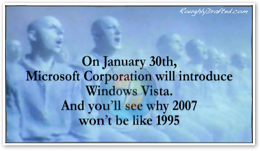

Having lost its competitive edge as a self satisfied empire throughout the 90s, the company is now facing both troubled sales across its consumer electronics efforts and the complaints of dissatisfied critics for both Windows Vista and the new Office 2007.
Time to blow out a distraction!
Pay No Attention To the Man Behind the Curtain.
In January, Microsoft rolled out Vista with as much hype as its multi-million dollar campaign could generate, while it also debuted Windows Home Server, a product vision for reselling its Windows Server software as a consumer appliance. Neither generated a decent fraction of the attention the company expected.
Instead, both were grossly overshadowed by Apple's simultaneous introduction of the iPhone, a product that embarrassed the scarcely two month old Zune while also heaping reproach upon Microsoft's newest sixth generation of its WinCE-based Windows Mobile smartphones.
Microsoft has been trotting out WinCE-based personal digital assistants since 1998, and WinCE-based mobile phones starting around 2003, but neither have created any meaningful impact on the tech world, and both have been huge failures financially. Apple's product demonstrations of the iPhone made it crushingly obvious that Microsoft's entire approach to smartphones and handheld computing was completely wrong.
Fast forward six months later, and the iPhone is still bathed in giddy anticipation, with more than a million users officially signed up, clamoring for information on its release.
Windows Mobile has gone nowhere, while Vista and the Zune have generated as much interest--even among PC enthusiast users--as ice cold lemonade might on the South Pole.
When Life Gives You Lemons, Make Lemonade.
With nothing else left to show for the last six years of development, Microsoft desperately needed to have something to demonstrate for all its mega-millions expended in research, and quickly. The result was Microsoft Surface, which the company bills as “a new computing platform.”
In reality, as “Scratching the Surface of Microsoft's New Table PC” detailed, this new platform is just a software shim for using a Windows PC as an interactive kiosk. Using a marketing committee to generate an outrageous amount of saccharine hype, Microsoft spun the tale of a few interesting human interface ideas as if it were introducing an entirely new kind of computer.
The ideas of wireless syncing and barcode scanning were presented as a new epoch of computing, hinged upon the buzzword of multitouch: responding to multiple inputs at once.
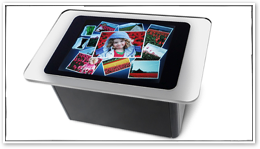 The Surface doesn't even use a touch screen, but rather a projector and a set of infrared cameras that sense the positioning of objects and direct manipulation occurring on top of its bathtub base.
The Surface doesn't even use a touch screen, but rather a projector and a set of infrared cameras that sense the positioning of objects and direct manipulation occurring on top of its bathtub base. This is technology hobbyists have been building on their own for years, not the result of some top secret project.
Microsoft Surface should have been called Vista Veneer.
Enter the Crickets Critics
What say the analysts on this subject? First, lets look at Glenn Derene’s report for Popular Mechanics. Derene was invited to Microsoft's campus for a briefing. As could be expected, he was delighted to accommodate Microsoft's desperate bid to present its naked empire as clothed in the most remarkable and beautiful threads of technology ever to be witnessed.
Derene is so excited by the company’s marketing speak that he writes, “Microsoft has quietly been developing the first completely new computing platform since the PC.”
That suggests that Microsoft developed the original PC, which is wrong (the blame lies with IBM), but also insists that readers forget the series of ‘new computing platforms’ Microsoft previously unveiled with blaring loud hype, only to be received with nothing more than the isolated chirps of crickets in the marketplace:
-
•the 1991 Windows for Pen Computing platform
-
•the 1992-1994 WinPad vaporware computing platform
-
•the 1996 Handheld PC / ‘PC companion’ computing platform
-
•the 1998 Palm PC computing platform
-
•the 2002 Mira Windows Terminal display computing platform
-
•the 2003 Pocket PC computing platform
-
•the 2003 Tablet PC computing platform
-
•the 2004 Media2Go/Windows Portable Media Center computing platform
-
•the 2006 Origami / Ultra Mobile PC computing platform
That’s a lot of spectacular failures over a long period of time. No need to dig back into the 80s like Brent Schlender’s attack on Apple TV and Steve Jobs’ ability to deliver products; Microsoft simply can not deliver its new computing platform product plans at all, and never has.
Look Mom, No Cables!
Derene introduced Jeff Gattis as Microsoft's Surface demonstrator; he says “the frustrating mess of cables, drivers and protocols that people must use to link their peripheral devices to their personal computers” moved the Surface team to introduce a bathtub with no external USB ports and “no obvious point of interaction except its screen.” That means no keyboard or mouse.
However, the reason Microsoft's Tablet PC was a recurring failure in its many instantiations was in part due to the fact that it was a PC device with no effective means of input. That means that either Microsoft has not learned anything at all in twenty years, or the company has invented some wildly new way to interact... or that Surface is not a new computing platform at all, but rather just a limited use, information kiosk like all the ones we've already seen elsewhere. 





After all, most kiosks do lack a keyboard; Microsoft didn’t invent that nugget of genius in its six years of laboring.
“If it seems as though the Surface machine sprang up out of nowhere, that's only because Microsoft has been unusually secretive about it,” Derene says, failing to point out that not only does Surface offer nothing new apart from a handful of clever interface animations suitable to use in kiosks, but that everything it does has been done for years by others--from commercial companies to homebrew tinkerers--and more effectively at that.
Derene does present a video of multitouch expert Jeff Han, who worked in multitouch research at NYU, demonstrated the state of the art in multi-touch at TED in 2006, and is now a commercial competitor to Microsoft, albeit on a scale above simplistic kiosk demos. Despite that, Derene still presents Microsoft is as having invented Surface as a secret six year effort. Boggle!
I'd Like a Reality Check, Please.
Since the only thing interesting about Surface is its kiosk software, perhaps Vista Veneer should have been sold as an application for building PC kiosks, not as “an amazing new $10,000 box” that delivers a range of wireless, machine vision, and DLP projection features that would not really have been too exciting several years ago.
Then again, another aspect to consider is that technology demos are easy. What's really hard is creating a product with an attractive price and an effective mix of features. The genius of the iPod is not that Apple “invented a new paradigm for listening to music,” but that it engineered an easy-to-use product at price points acceptable enough to result in the sustained sale of 100 million units over the past six years.
Microsoft has not demonstrated the ability to build either reference platforms or its own products that can sell at a profit in volume. The Xbox struggled to sell itself even at a subsidized loss, and no Zune has been sold to anyone outside of Microsoft and its small minority of devoted proponents (but more on that later).
The fact that the Surface package--which bundles a Vista PC with a 1024x768 projector, five IR cameras, and a tub with a frosted plastic top--is priced at ten grand but still demands expensive customized implementation work to do anything useful helps to clarify that this isn't tricky engineering, but only lots of vacuous marketing.
Popular Mechanics, don't tell us this is the future of computing, because we can cobble together a better system with more flexibility and technical advancement in our own garage, and did so last year.
Gizmodo said Microsoft’s Surface “looks pretty neat,” based on a video demo that showed, among other things, how Bill Gates could use Surface for “ordering and paying for food using credit cards.”
Ryan Block of Engadget similarly wrote, “damned if this wasn't one of the coolest technology demoes we've seen in long while -- bugs and all.” Amazing stuff, but how does Surface deal with credit cards?
The demo given by Gates on NBC’s Today Show inexplicably shows Gates placing credit cards on the Surface and using a finger control to set a desired gratuity amount. However, there is no actual way for Surface to deal with the card; the demo was not just faked, but absurd on its face. Why will nobody point this out?
Surface can only recognize objects tagged with a “domino” barcode, and Microsoft only chose to give it the ability to distinguish between 256 different items. Presumably, most casinos or hotels would deal with more cards than that. Surface doesn't read the card number via its cameras either; the cards are left face up in the demo anyway.
Further, why would I want my credit card lying out in the open? To allow identity thieves to take a snapshot with a camera phone while I buy drinks? Does Microsoft ever consider the security implications for its marketing driven product visions? And how tacky is it to dial up a tip in public anyway?
Elsewhere, Microsoft points out that some systems will have a conventional card swipe reader--they are built to order for each client. That being the case, why present a fake demonstration of something that makes no sense? And why do Gizmodo and Engadget fall for such a ridiculous ploy? At least NBC is a Microsoft partner.
It would have been more impressive had Gates placed his credit card on his forehead in a Karnak The Magnificent gesture and told his Today Show host that Surface used ESP to calculate a the tip by reading his mind. It would have been just as honest, and no doubt the Today Show, Gizmodo, and Engadget would have bought it.
Perhaps Gates just has no sense of humor. Or perhaps he’s smart enough to only play his shell game with the truly gullible.
Melissa Perenson, PC World: Uncritical of the Empire's New Clothes.
PC World cites Microsoft's Pete Thompson as promising, “It will feel like Minority Report.” Is that because it will thrust ads upon us as we pass? The interface in Minority Report used gloves and hand gestures, not bar code stickers and frosted light tables. The only Surface in that movie was the Gap's incessant video billboards.
Ads seem like the main purpose for the Surface kiosks: “T-Mobile will use them to enhance the cell phone shopping experience,” Perenson writes. 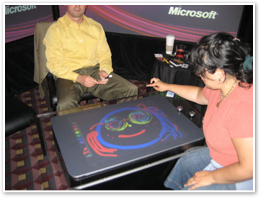

That's important because T-Mobile won't have iPhones to sell. It will sure need some fancy distraction technology to sell users a Windows Mobile phone, and “later this year” won't come soon enough.
Maybe Microsoft can add a smoke generator and some mirrors and still make its $10,000 price target.
David Daoud, IDC: Uncritical of the Empire's New Clothes.
Perenson also delivers some jaw dropping analysis from IDC's David Daoud, who she calls “a believer.”
Dauod says Surface is “itself is an innovation; it's a form factor that's long overdue.” Ok, of all that can be said about Microsoft's new light table, its “form factor” is not the attribute that can best be gushed about. That's some serious sword swallowing! You must have no gag reflex at all, Mr Daoud. Very impressive.
Daoud continues,”You will see us now talk about this concept of surface computing--about how you get away from the usual input devices.” Why is that: because “surface computing” is a new idea, or because Microsoft has claimed credit for something that is already commonplace, and IDC wants to help revise history?
Clearly, IDC is all about telling the world what it should think: “Consumers will be more impressed with [Surface] than with anything they've seen in computing innovation in the past several years.” Again, why?
Since they've all already see it elsewhere, the only possible explanation is that IDC plans to spin a new line of historical revisionism that credits Microsoft with inventing something that it hasn't really even improved upon or contributed much toward.
Why not direct some attention to the decades of public prior art already established? Is that outside of the IDC’s core competency of servicing the Microsoft hegemony?
Mike Elgan, Computerworld: Uncritical of the Empire's New Clothes.
Computerworld's Mike Elgan, who happens to like Microsoft a lot anyway, decided to write about Surface in comparison to Apple's iPhone.
He then posted his Surface article on Digg under the Apple category, perhaps intending to exploit the same concept behind Rodney Dangerfield's classic line about getting so little respect that “mom had to tie a pork chop around my neck to get the dog to play with me.”

In Elgan's case, tying the iPhone around the neck of Surface and posting it to Digg/Apple resulted in his article getting one Digg apart from his own after five days. The other Digg was from a bot user who was subsequently banned. Apparently even the drones of Digg can’t be fooled by all caps, at least not all the time.
Moved by pity, I logged into Digg for the first time in a while and left him another Digg. Part of my generosity was prompted by the discovery that Elgan's own wikipedia autobiography was unceremoniously deleted by the wiki police due to his being “not particularly notable.” Ouch!

In any case, what does Elgan have to say about Surface, and how is it similar to the iPhone?
He describes both as an example of a “third generation PC user interface,” one that responds to touch and gestures using direct visual feedback and physics. According to Elgan, the first two generations were the command line and the Mac graphical interface from 23 years ago. Today, he says, we’re “long overdue for the next generation.”
But how is the third generation anything new? We have had touch screens for decades, they just haven't been very practical outside of simplified kiosk-driven systems such as ATMs. Kids play with the Nintendo DS, and adults play with the Palm Pilot, both of which have long used direct touch and visual feedback on the screen.
The idea of multitouch is new in that most previous systems have only identified one touch point, commonly using a stylus. Touch two places on a Wacom graphics tablet at the same time, and the system responds by jumping around erratically. Multitouch allows a system to record multiple inputs, opening the way for using complex gestures.
The Mysterious Vanishing of FingerWorks.
Last year, Apple quietly acquired FingerWorks, a vendor of touch sensitive USB tablets. Unlike typical tablets, FingerWorks’ responded to multiple touches at once, enabling users to perform multiple finger gestures to scroll around documents or even trigger commands, such as saving a document or doing a copy and paste.
FingerWorks also developed a special input tablet that acted as a drop-in replacement keyboard for Apple’s laptops. 

Rather than typing using physical keys, the replacement sensor panel allowed users to type by touching keys printed on the surface, while also allowing them to perform freeform gestures across the tablet’s surface.
While no public comment was made about the acquisition, it was deduced that Apple clearly wanted FingerWorks for something. Today, various people are still wondering if Apple will release this multi-touch input technology for its Mac Book laptop lines. This is curious because Apple already did.
All Mac Books and Mac Book Pros now feature a trackpad that responds to multiple touches. Rather than introducing a complex gesture input system, Apple presents the feature in two finger scrolling and two finger clicking.
One touch on the trackpad moves the mouse cursor around, while two fingers scroll the document. Similarly, clicking the button with two fingers down is interpreted as right clicking. It's brilliantly simple and completely transparent, even optional. After getting used to it, it is frustrating to use a conventional trackpad.
What's new about the iPhone is of course that its multitouch trackpad is an invisible layer over its display. Touch screens don't make a lot of sense on a desktop PC, but sure come in handy on a handheld computer, where a full size keyboard is commonly impractical. So there is no new generation in user interfaces going on here, just a more sophisticated input device, and an improved touch screen technology for handhelds.
I've Written about the iPhone. The iPhone is a Friend of Mine. Surface, You're No iPhone.
With all that in mind, it becomes rather absurd for Elgan to try to associate the iPhone with Surface, which is nothing more than a kiosk developer kit for Vista.
However, things get really comical as Elgan tries to credit Microsoft with inventing the future. Referring to his own article from February, he says, “I assumed Apple would be first to announce a third-generation computer. This week, Microsoft beat Apple with an announcement. But will Apple beat Microsoft with shipping an actual product?”
Even ignoring the nonsense about third generation computing, how has Microsoft beaten Apple to announcing a computer with innovative input features? By demonstrating a $10,000 hardware bundle available later in the year? Apple announced the iPhone before Elgan had the idea of writing about who might deliver ideas first. The iPhone certainly is a computer, far more so than the toy phones delivered under the Windows Mobile banner.
After delivering a non-sequitur crediting Microsoft for promising six months later what Apple is getting ready to ship, Elgan then--perhaps accidently--reveals why it’s so important to gush about the Surface and suggest that Microsoft has delivered something really new: things are looking really bad for Microsoft right now:
“Pundits, the press and users -- including me -- have been hard on Microsoft lately,” Elgan says. “And for good reason. Flaccid Vista sales and confusing Vista versions, high prices, lame initiatives like the Ultra Mobile PC and a general lack of innovation have given the company an increasingly bad reputation. But Surface is a spectacular home run. The secrecy, the implementation, the rollout plan, the early marketing all impress.”
What Impresses Me Is the Marketing.
Notice what impresses: the secrecy, the implementation, the rollout plan, the marketing. In other words, the vaporous marketing of Microsoft’s non-product really gets me excited.
There is no product here, just lots of buzzwords and an assortment of ideas already commonly implemented elsewhere. Microsoft has pooped out a kiosk demonstration that could have been done as a Flash website, packaged it up as a press release with videos, and launched it as its biggest idea for 2007.
“Surface appears to give Microsoft an early lead in the next generation computing platform, and, significantly, it thrills partners like Intel and others,” Elgan continues. “Surface craves massive computing power. It guarantees another decade -- or two -- of global demand for ever-newer, bleeding-edge hardware. And even though Microsoft will build the initial hardware itself (using partner components, of course), it's likely that the company will extend the platform to PC makers like Dell and HP.”
This is rich: Microsoft actually says the Surface is powered by a run of the mill PC running Vista. There is no massive demand for processing power required to run a kiosk. Were this an actual product with real applications that end users might find useful, Elgan's giddy accolades might make some sense. But it currently delivers nothing, including no reasonable premise of profitability as a product. The real work is yet to be done.
If you want to compare Surface with the iPhone, compare the fact that the iPhone does real things: real web, real mail, real phone calls, a real media library. It wasn’t unveiled as a pretend demo of how a future phone device might work, like Adobe’s Flash Light on the LG Prada phone, or Sun’s photoshopped demo of the jPhone.
The iPhone is real; Surface is just a technology demo that does nothing real; its a demo of a demo system.
Microsoft’s Trouble With Partners.
And as for partners--a big talking point among the Microsoft folks--HP not only recently dumped its Media Center plans with Microsoft, but also makes its own interactive display products. I’m sure HP is glad Microsoft is going it alone with Surface. And how will Dell matter?
The only reason Surface is good for Microsoft at all is because it gives Vista something to do. That makes Surface a very close kin of Media Center: it’s a basic application that desperately tries to give people a reason to buy and use Vista. Will it work as planned? And if it does, will it generate income for the company?
Based upon the track record of the last decade of Media Center (or WinCE), things sure don't look promising. And based on how Microsoft unceremoniously dumped its PlaysForSure partners when it decided to do the Zune, being partnered with Microsoft isn’t exactly what a smart company with options would seek to do.
The best use of Surface may be to revise history to suggest that Microsoft can deliver top secret surprises out of nowhere like Apple, has a market for its ad products like Google, and has some connection with the iPhone that makes it deserve at least a little bit of respect. 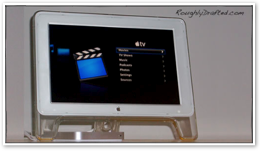

Never underestimate the power of suggestion.
Elgan says “Microsoft critics and Apple fans” have long “bashed Microsoft” for copying Apple's innovations. As a member of both camps, I'd like to point out that I spent much of the 90s disappointed not that Microsoft built Windows upon concepts Apple invented for the Mac, but that Windows was such a poor copy.
If only Microsoft could have added value and made the desktop better! But no, the only contributions were the silly Start menu and a series of other inconsistent and poorly conceived ideas.
Elgan even takes the opportunity to give Xerox the credit for the development of the Macintosh. We know that talking point is trash, but here’s series of screenshots that point out how much innovation Apple and NeXT added to the rudimentary beginnings of the graphical user interface that originated at Xerox, and how Microsoft's contributions were actually a great leap backward (click images for more information).
The $16,000 Xerox Star in 1981 and the $2500 Apple Macintosh in 1984:
Microsoft Windows 1.0 in 1983, Windows 2.0 in 1987:
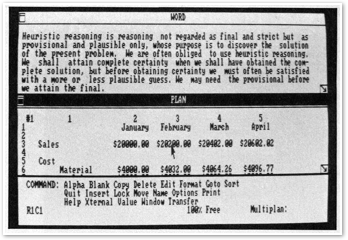
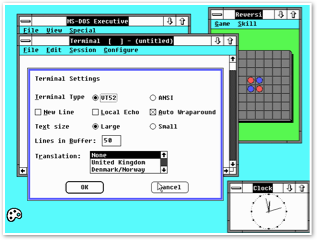
NeXT’s NeXTSTEP in 1993 and Microsoft’s Windows 3.11 in 1993:
Microsoft Windows 95/98/Me and Mac OS 7.x from 1995-2000:
Windows XP and Mac OS X 10.1 in 2001:
Please Take Me Back To The 90s!
In closing, Elgan predicts Apple will introduce its own bathtub of cameras at WWDC. Naturally, since Microsoft has now proven itself a great innovator of secret developments, Apple must play the role of the desperate also-ran!
If Apple doesn't rush to show its own me-too version of Surface, Elgan predicts “a whole new ball game” where the “perception and the reality will be that Microsoft, not Apple, is the leader and innovator in the next-generation desktop user interface department.”
Right, because nobody today with a $10,000 budget can whip up a Mac-based kiosk with some fancy demo graphics. Thank you Microsoft for delivering the future, and thank you Elgan, for pointing out that Microsoft could be a contender after all!
Perhaps after rolling out a few thousand of these $10,000 hobby buckets of a projector, cameras, and a PC, Microsoft can jump on its Zune, the Ultra Mobile/Tablet PC, and the smartphone, and make any one of them worth considering for consumers. That’s what Elgan should be fantasizing about.
Enderle (Yawn): Uncritical of the Empire's New Clothes.
Rob Enderle also wrote about the Surface for TechNewsWorld, but neither his article nor his site is worthy of mention in any detail, as he says nothing even remotely interesting. It’s all about how Apple should be selling Windows so it could be the size of Dell. Even Enderle has got to be embarrassed to read his own stuff.
The Register: Redeems Itself with a Smart, Incisive Look at Surface.
The Register, a site I love to throw digs at for regularly printing shallow, inaccurate, and caustic tantrums, actually published an article on the Surface that's both well written and informed.
That may be because nobody at the Register actually wrote the article; it was drafted by Andrew Fentem, a developer at a company that builds multitouch interfaces, Spaceman Technologies.
Fentem links to Bill Buxton's site at Microsoft, which outlines progress in the long history of multitouch research and development, very little of which has anything to do with Microsoft. Fentem also points out that the rear projection Microsoft uses in the Surface tub is neither practical for large applications nor scalable for low cost consumer implementations.
“Forget mobility and portability. Is it even moveable?” Fentem asks. Why yes, Microsoft put wheels on at least some of its Surface tubs, according to the diagram in Popular Mechanics!
Fentem points out that a “successful commercial product would have to be flat and portable,” and cites developments by:
-
•Toshiba Matushita, involving a "system on glass" process to embed touch sensitivity into LCD displays.
-
•British firm Plastic Logic, developing a flexible touch screen system
-
•Philips' touch sensitive LCD called Entertaible
-
•his own Spaceman Technologies research
-
•Apple's curious patent for exchangeable "mechanical overlay" touch interface in 2005
The Register's own staff report, written by Bill Ray, merely repeated talking points from Microsoft's press release, as did most other big media sources. If you run across any interesting articles on Surface, send them in!
Like reading RoughlyDrafted? Share articles with your friends, link from your blog, and subscribe to my podcast!
Did I miss any details?
Next Articles:
This Series

Haloscan Q107
Microsoft Surface: the Fine Clothes of a Naked Empire
Wednesday, June 6, 2007

Ad




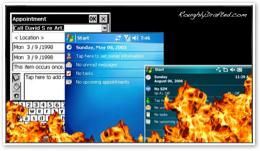

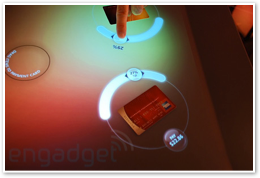
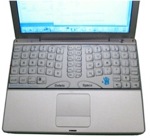
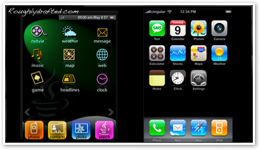
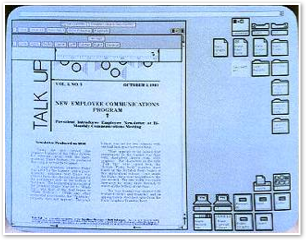
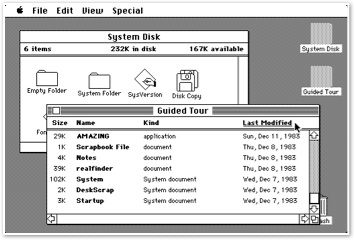
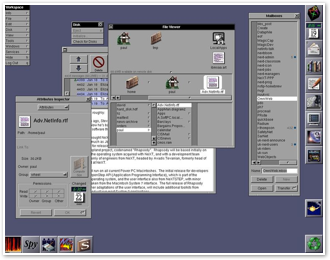
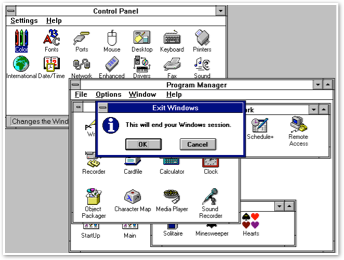
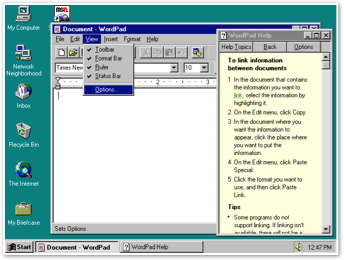
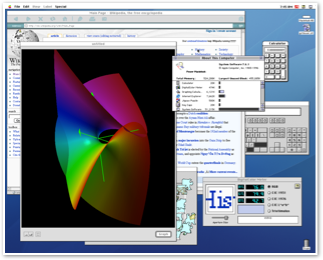
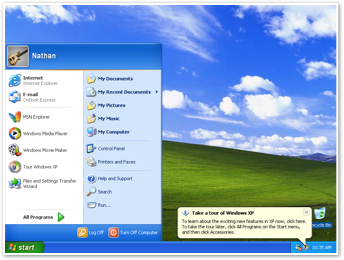
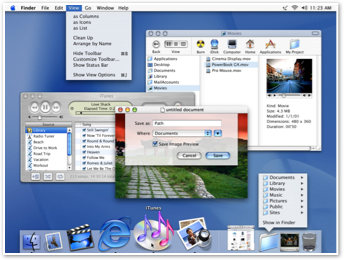
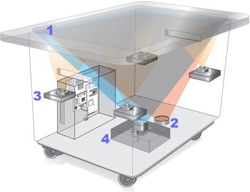
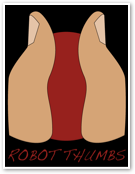
 Bookmark on Del.icio.us
Bookmark on Del.icio.us Discuss on Reddit
Discuss on Reddit Critically review on NewsTrust
Critically review on NewsTrust Forward to Friends
Forward to Friends
 Get RSS Feed
Get RSS Feed Download RSS Widget
Download RSS Widget





